Peer-reviewed articles by Stanisław Gurba
"Artykuły. Magazyn Studentów Historii Sztuki KUL", 2017
Valentino Rovisi (ur. grudzień 1715 w Moenie, zm. 12 marca 1783 w Wenecji) – włoski malarz, fresk... more Valentino Rovisi (ur. grudzień 1715 w Moenie, zm. 12 marca 1783 w Wenecji) – włoski malarz, freskant okresu rokoka, propagator weneckiego malarstwa dekoracyjnego. Zasługą Rovisiego jest przeniesienie szkoły malarstwa weneckiego na jego rodzinne tereny. Znaczna część jego prac znajduje się w Moenie i pobliskich miejscowościach: w Val di Fassa, Val di Fiemme, Trydencie i Górnej Adydze. Freski są świadectwem jego działalności w Alleghe, Cembra, Cavedine, Roncegno, Moenie i Pietralbie.
Ciało i duch w obliczu śmierci, 2016
RESOVIA SACRA, 2016
Charles de Prevo was the north Italian painter working in Poland at the turn of the seventeenth a... more Charles de Prevo was the north Italian painter working in Poland at the turn of the seventeenth and eighteenth centuries. The article shows the artistic live of Charles de Prevo, in particular his whereabouts in Poland and his paintings. The study of article has been used publications about the painter and his works, correspondence painter from his patrons and other archives. So far there is no publication showing the overall artistic activity of Charles de Prevo. On the example of this painter was presented socio-political situation and artistic phenomenon in the XVI - XVIII centuries in Europe.
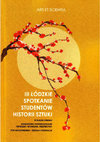
III Łódzkie Spotkanie Studentów Historii Sztuki (Łódź, 12-14.12.2014)
Karol de Prevo to malarz północnowłoski, działający w Polsce od ok. 1692 do swojej śmierci w 1737... more Karol de Prevo to malarz północnowłoski, działający w Polsce od ok. 1692 do swojej śmierci w 1737 roku. Był on artystą niezwykle płodnym, szybko wykonującym liczne kompozycje malarskie o tematyce religijnej. Część malowideł zachowała się do naszych czasów, część znana jest jedynie z fotografii albo z opisów. Pozostawiona korespondencja artysty ze swoją chlebodawczynią Elżbietą Sieniawską oraz z kapitułą sandomierską rzuca światło na zaangażowanie malarza w realizację powierzonych mu zadań. Analiza pism pióra Karola de Prevo oraz wybranych malowideł artysty (w kontekście źródeł ich inspiracji oraz na tle XVIII-wiecznych relacji artysta-mecenas) pozwala wskazać, na ile twórczość Karola de Prevo była inspirowana innymi malowidłami, gotowymi grafikami, dostępną wówczas literaturą, własną inicjatywą malarza czy sugestiami mecenasów sztuki oraz teologów.
One of the functions related to museum activities is education. This function is carried out by v... more One of the functions related to museum activities is education. This function is carried out by various museum types, including Church museums. Taking into account that over the past decades a new branch of pedagogy appeared, museopedagogy, it seems worthwhile to have a look at the activities of museum institutions in the field of education and upbringing. This issue will be shown on the example of selected activities of the Parish Museum in Grybów, in an attempt to pinpoint the pedagogical area of activity of Church museums.
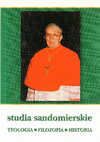
The phenomenon of the Gothic sacred art and liturgy of the Roman Church in Poland is the incorpor... more The phenomenon of the Gothic sacred art and liturgy of the Roman Church in Poland is the incorporation of the Russo-Byzantine frescoes, paintings representing the Eastern Catholic Churches, in typical late-Gothic interior of the Church, for the Roman Catholic liturgy. This phenomenon has emerged in a specific period of Polish history associated with the reign of Władysław Jagiełło and did not penetrated into the polish art, but was treated as a separate and alien. Russo-Byzantine paintings in Polish art are a closed group, and all known sources do not confirm their subsequent art reception. However, the reception of medieval works of art is possible in subsequent eras in terms of eastern paintings perception by the society, which will be presented by the example of frescoes found in the Cathedral Basilica in Sandomierz. The reception of frescoes over centuries took place in three stages. The paintings were seen as a theological and liturgical work in the first period of their existence. Then, what was mainly emphasized was their decorative function. However, in recent years, frescoes are seen as a work of an unique art in Poland and Europe.
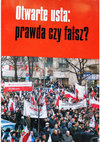
Otwarte usta: prawda czy fałsz?, red. Jan Zimny, Jul 2014
Słowo jako dźwięk werbalny nie jest jedynym sposobem komunikowania się. W czasach dawnych sztuka ... more Słowo jako dźwięk werbalny nie jest jedynym sposobem komunikowania się. W czasach dawnych sztuka wizualna pełniła rolę środka przekazującego bardzo złożone treści. Szczególnie kościoły poprzez swój wystrój miały spełniać zadania dydaktyczne. W różnych epokach cel ten był realizowany w rozmaity sposób. Nierzadko przekaz był zafałszowany poprzez przemalowania, zniszczenia, nieczytelność przedstawień czy inskrypcji. Droga do odkrywania prawdy zawartej w programach ikonograficznych kościołów jest długa i mozolna. Kościół św. Pawła w Sandomierzu ze względu na bogactwo wyposażenia oraz zachowane niemal w niezmienionej formie nowożytne wnętrze jest doskonałym przykładem ilustrującym proces odczytywania treści zawartych w wystroju i wyposażeniu wnętrza kościelnego.
The word as a verbal sound is not the only way to communicate. In later times the visual arts served as a means of communicating complicate contents. Especially churches through its decor have meet the demands teaching. At different times, this objective was realized in various ways. Often the message was distorted by recoating, destruction, illegible representations or inscriptions. The way to discovering the truth of the iconographic programs of churches is long and arduous. Church of Saint Paul in Sandomierz, because of the wealth of equipment and preserved almost unaltered modern interior is a perfect example illustrating the process of reading the contents of the interior decor and accessories from the church.
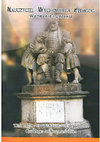
[w:] Nauczyciel-Wychowawca-Pedagog. Wyzwania i zadania, red. P. Juśko, M. Borys [i inni], Tarnów 2014, s. 38-47., 2014
Streszczenie:
Praca nauczyciela i wychowawcy wśród młodocianych przestępców jest szczególnie wym... more Streszczenie:
Praca nauczyciela i wychowawcy wśród młodocianych przestępców jest szczególnie wymagająca. Kluczem do sukcesu pedagoga w tej placówce jest umiejętność nawiązania komunikacji nauczyciel-uczeń. Zapiski archiwalne oraz publikowane teksty dotyczące pracy ks. Adama Kaźmierczyka (1920-2004) w Zakładzie Poprawczym w Tarnowie w latach 1956-1961 ukazują proces i metody nawiązania komunikacji nauczyciel-uczeń oraz wypływające z tego korzyści pedagogiczne. Artykuł jest z zakresu historii, ma na celu ukazanie sylwetki pedagoga i jego podejście do pracy z trudną młodzieżą w oparciu o dostępny materiał źródłowy.
Summary:
Working as a teacher and an educator of juvenile delinquents is a particularly demanding task. The ability to initiate the teacher-student communication is the key to success for every educator. Archival records and the literary works dedicated to the professional activity of Fr. Adam Kaźmierczyk (1920-2004) at the Correctional Facility in Tarnów in the period of 1956-1961 present the process and methods of establishing the teacher-student communication, but also its pedagogical consequences.
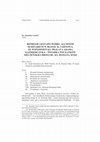
Tarnowskie Studia Teologiczne, Dec 2013
Father Adam Kazmierczyk (1920-2004), as a student of the first year of the Seminary in Tarnow, wa... more Father Adam Kazmierczyk (1920-2004), as a student of the first year of the Seminary in Tarnow, was one of the people arrested on April 22, 1941 by the Nazis in Blonie near Tarnow. He was thus an eyewitness to the beginning of martyrdom of the rector, Fr. Roman Sitko – now blessed. This article has cited the memories of Fr. Adam concerning his seminary formation, which was interrupted for 100 days due to his arrest and imprisonment in Tarnów. These facts may partly be revealed in the previously published interviews of Fr. Kazmierczyk, or known for a certain group of people from his oral tradition. Some events can be aligned with the memories of the witnesses of Fr. Roman Sitko’s arrest, available in the publications devoted to the Blessed Father. Any such information is valuable and sheds light on the issue of repression against the Church in Tarnow by the Nazis during World War II and the heroic attitude of the priests at the time. This article contains excerpts of the archival manuscript by Fr. Adam Kazmierczyk, confirms the already known facts and is a new voice in the matter.
Articles by Stanisław Gurba
Kronika Diecezji Sandomierskiej, 2018
Kolekcja papieskich santini wydawanych w czasie pontyfikatu św. Jana Pawła II z okazji świąt Boże... more Kolekcja papieskich santini wydawanych w czasie pontyfikatu św. Jana Pawła II z okazji świąt Bożego Narodzenia i Wielkanocy została zebrana w latach 1995-1999 przez ks. Jacka Uliasza podczas jego studiów w Rzymie i przekazana do stalowowolskiego muzeum w 2016 r. Wystawa została zorganizowana przez Muzeum Jana Pawła II w Stalowej Woli i Muzeum Diecezjalne w Sandomierzu, a aranżacja i wykonanie są dziełem sandomierskiego artysty - plastyka Bartosza Cebuli. Tytuł wystawy Oblicze Boga w tajemnicy Bożego Narodzenia i Zmartwychwstania Pańskiego oraz scenariusz, w tym informacja wprowadzająca w temat ekspozycji podana w czterech językach (polskim, włoskim, niemieckim i rosyjskim) zostały zaczerpnięte z książki o tym samym tytule.
Kronika Diecezji Sandomierskiej, 2018
Proboszcz w Bielinach, urodził się 12 kwietnia 1826 r. w Strzyżowie. Szkołę ludową i gimnazjum uk... more Proboszcz w Bielinach, urodził się 12 kwietnia 1826 r. w Strzyżowie. Szkołę ludową i gimnazjum ukończył w Rzeszowie, filozofię i teologię w Przemyślu. Święcenia kapłańskie otrzymał 29 września 1852 r. Pracował jako wikariusz w Rzeszowie, a potem w przemyskiej katedrze. W latach 1859 - 1865 był kanclerzem Konsystorza biskupiego w czasach biskupstwa Jasińskiego i Manastyrskiego. Od 1865 r. był proboszczem w Bielinach. Zmarł 13 maja 1917 r. w Bielinach i został pochowany na miejscowym cmentarzu.
Kronika Diecezji Sandomierskiej, 2018
Kronika Diecezji Sandomierskiej, 2017
Dnia 20 listopada 2017 r. minęło 50 lat od śmierci ks. prał. Józefa Skoczyńskiego, pierwszego pro... more Dnia 20 listopada 2017 r. minęło 50 lat od śmierci ks. prał. Józefa Skoczyńskiego, pierwszego proboszcza w Stalowej Woli, budowniczego dwóch stalowowolskich kościołów (św. Floriana i Matki Bożej Królowej Polski). Jego postać upamiętnia wystawa w Muzeum Jana Pawła II w Stalowej Woli.
Kronika Diecezji Sandomierskiej 108(2015)3-4, May 1, 2015
Kościoły drewniane należą do szczególnej kategorii zabytków naszego kraju. Jubileusz 200-lecia po... more Kościoły drewniane należą do szczególnej kategorii zabytków naszego kraju. Jubileusz 200-lecia powstania diecezji sandomierskiej (1818-2018) jest okazją, aby zwrócić uwagę na drewniane budowle sakralne w diecezji w jej obecnych granicach terytorialnych (od 1992 r.). Kościoły drewniane znajdujące się na terytorium diecezji sandomierskiej poprzez swą wielobarwność pokazują rozmaitość wśród mieszkańców w różnych okresach historii.
"Kronika Diecezji Sandomierskiej", May 2014
Kronika Diecezji Sandomierskiej, Mar 2014
Kronika Diecezji Sandomierskiej, Jan 2014
The artistic patronage of Elżbieta Sieniawska née Lubomirska seems to be nothing exceptional at t... more The artistic patronage of Elżbieta Sieniawska née Lubomirska seems to be nothing exceptional at that time. However, as far as the artistic patronage of Sieniawska is concerned, it is the impetus that makes her actions so distinctive. The artists gathered around her in Łubnice play a key role in creating the modern culture of Poland. Due to the fact that the artists are employed mainly from the countries of the Habsburg Monarchy, the new artistic patterns transferred into the Republic of Poland originate from Northern Italy. This issue, together with the numerous examples of Sieniawska’s foundation and her skilful management of estates confirmed on the basis of the preserved correspondence, shed new light on the art and culture of the country at the turn of the seventeenth and eighteenth centuries.
Kronika Diecezji Sandomierskiej, Jan 2014
Kronika Diecezji Sandomierskiej, Jul 2013


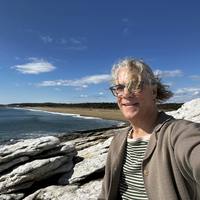
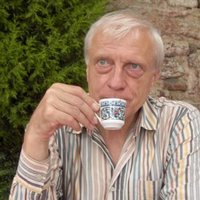
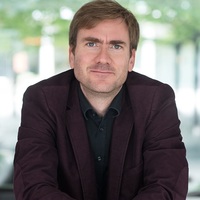
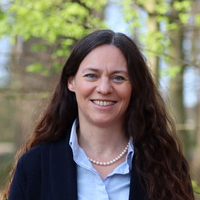
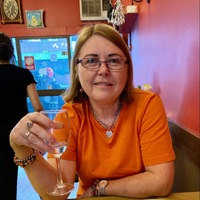

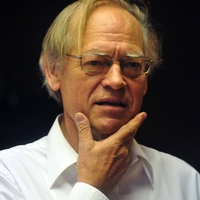
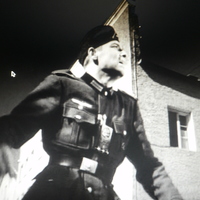
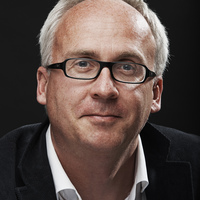
Uploads
Peer-reviewed articles by Stanisław Gurba
The word as a verbal sound is not the only way to communicate. In later times the visual arts served as a means of communicating complicate contents. Especially churches through its decor have meet the demands teaching. At different times, this objective was realized in various ways. Often the message was distorted by recoating, destruction, illegible representations or inscriptions. The way to discovering the truth of the iconographic programs of churches is long and arduous. Church of Saint Paul in Sandomierz, because of the wealth of equipment and preserved almost unaltered modern interior is a perfect example illustrating the process of reading the contents of the interior decor and accessories from the church.
Praca nauczyciela i wychowawcy wśród młodocianych przestępców jest szczególnie wymagająca. Kluczem do sukcesu pedagoga w tej placówce jest umiejętność nawiązania komunikacji nauczyciel-uczeń. Zapiski archiwalne oraz publikowane teksty dotyczące pracy ks. Adama Kaźmierczyka (1920-2004) w Zakładzie Poprawczym w Tarnowie w latach 1956-1961 ukazują proces i metody nawiązania komunikacji nauczyciel-uczeń oraz wypływające z tego korzyści pedagogiczne. Artykuł jest z zakresu historii, ma na celu ukazanie sylwetki pedagoga i jego podejście do pracy z trudną młodzieżą w oparciu o dostępny materiał źródłowy.
Summary:
Working as a teacher and an educator of juvenile delinquents is a particularly demanding task. The ability to initiate the teacher-student communication is the key to success for every educator. Archival records and the literary works dedicated to the professional activity of Fr. Adam Kaźmierczyk (1920-2004) at the Correctional Facility in Tarnów in the period of 1956-1961 present the process and methods of establishing the teacher-student communication, but also its pedagogical consequences.
Articles by Stanisław Gurba
The word as a verbal sound is not the only way to communicate. In later times the visual arts served as a means of communicating complicate contents. Especially churches through its decor have meet the demands teaching. At different times, this objective was realized in various ways. Often the message was distorted by recoating, destruction, illegible representations or inscriptions. The way to discovering the truth of the iconographic programs of churches is long and arduous. Church of Saint Paul in Sandomierz, because of the wealth of equipment and preserved almost unaltered modern interior is a perfect example illustrating the process of reading the contents of the interior decor and accessories from the church.
Praca nauczyciela i wychowawcy wśród młodocianych przestępców jest szczególnie wymagająca. Kluczem do sukcesu pedagoga w tej placówce jest umiejętność nawiązania komunikacji nauczyciel-uczeń. Zapiski archiwalne oraz publikowane teksty dotyczące pracy ks. Adama Kaźmierczyka (1920-2004) w Zakładzie Poprawczym w Tarnowie w latach 1956-1961 ukazują proces i metody nawiązania komunikacji nauczyciel-uczeń oraz wypływające z tego korzyści pedagogiczne. Artykuł jest z zakresu historii, ma na celu ukazanie sylwetki pedagoga i jego podejście do pracy z trudną młodzieżą w oparciu o dostępny materiał źródłowy.
Summary:
Working as a teacher and an educator of juvenile delinquents is a particularly demanding task. The ability to initiate the teacher-student communication is the key to success for every educator. Archival records and the literary works dedicated to the professional activity of Fr. Adam Kaźmierczyk (1920-2004) at the Correctional Facility in Tarnów in the period of 1956-1961 present the process and methods of establishing the teacher-student communication, but also its pedagogical consequences.
według następujących działów: I. Książki, II. A. Redakcja książek,
II. B. Redakcja czasopism, III. A. Artykuły naukowe, III. B. Publikacje źródeł, III. C. Hasła w słownikach III. D. Recenzje, III. E. Zestawy bibliografii, F. Sprawozdania, wstępy w pracach zbiorowych, IV. A. Artykuły popularnonaukowe, IV. B. Materiały duszpasterskie, V. Inne.
--------------------------------------
The European Heritage Days is the largest social and educational project in Europe, the most important celebration of cultural monuments of the Old Continent.